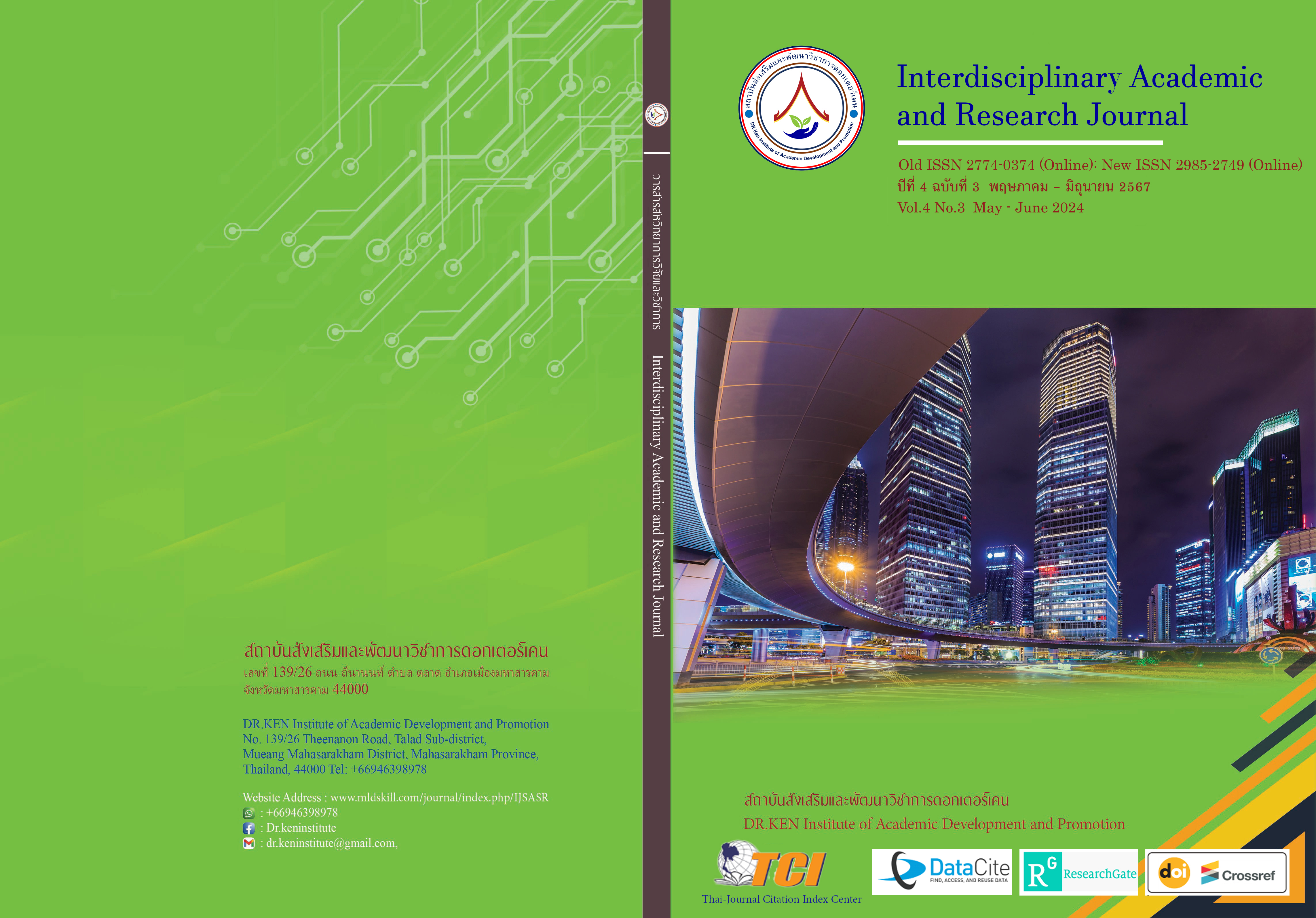Standards for Managing Vocational Education in a Bilateral Participatory System
DOI:
https://doi.org/10.60027/iarj.2024.276157Keywords:
Vocational Education; , Dual System; , Participation; , StandardsAbstract
Background and Aims: The standard for managing bilateral vocational education in a participatory system places a strong emphasis on managing the program using space as a foundation. By connecting the management of vocational education with the strategic use of space, the standard aims to improve the quality of bilateral education. Acquire and hone students' professional competencies. producing education that is in line with the demands of society and the local community. This study aims to provide guidelines for area-based bilateral vocational education management that are connected to participatory bilateral vocational education management.
Methodology: A theory based on the area-based participatory bilateral vocational education management system was developed for this investigation by compiling and evaluating data regarding the requirements and viability of the research topic. To assess the needs of the community and the students, the study surveyed information on the variables that both encourage and restrict the use of learning spaces.
Results: The guidelines for managing participatory bilateral vocational education center on the use of space as a foundation for managing bilateral vocational education, with a focus on creating environments that support learning and help learners develop their career skills to the fullest extent possible.by placing a high value on the use of space for high-quality education that is in keeping with the requirements of society and the local community. By presenting this standard, relationships, and cooperation are established between partner and community-level organizations to achieve effective and long-lasting learning and development. In the long term, it will contribute to the creation of a catalyst for the effective and responsive growth of skill development and vocational education in the community.
Conclusion: standards for the management of participatory bilateral vocational education are a crucial instrument for improving the caliber of instruction and enhancing staff competencies at the bilateral level. And has an impact on society's long-term sustainable development of communities.
References
จอมพงศ์ มงคลวนิช.(2561).การบริหารอาชีวศึกษาระบบทวิภาคี.กรุงเทพฯ : สำนักพิมพ์แห่งจุฬาลงกรณ์มหาวิทยาลัย, 2561.
จันทรานี สงวนนาม. (2551). ทฤษฎีและแนวปฏิบัติในการบริหารสถานศึกษา. พิมพ์ครั้งที่ 2. กรุงเทพมหานคร: บุ๊ค พอยท์
จีระพงษ์ หอมสุวรรณ. (2556). การพัฒนารูปแบบการบริหารแบบมีส่วนร่วมในสถานศึกษา สังกัดสำนักงานคณะกรรมการการอาชีวศึกษา. วิทยานิพนธ์ปริญญาดุษฎีบัณฑิต, มหาวิทยาลัยนเรศวร พิษณุโลก.
ประกาศสำนักงานคณะกรรมการการอาชีวศึกษา (2563) เรื่อง มาตรฐานการจัดการอาชีวศึกษาระบบทวิภาคี พ.ศ. ๒๕๖๓ ลงวันที่ ๒๐ สิงหาคม ๒๕๖๓ สำนักงานคณะกรรมการการอาชีวศึกษา.
ประกาศสำนักงานคณะกรรมการการอาชีวศึกษา เรื่อง กรอบมาตรฐานคุณวุฒิอาชีวศึกษาแห่งชาติ พ.ศ. ๒๕๖๒ ลงวันที่ ๑๓ กุมภาพันธ์ พ.ศ. ๒๕๖๒ สำนักงานคณะกรรมการการอาชีวศึกษา.
ศูนย์อาชีวศึกษาทวิภาคี. (2557).แนวทางปฏิบัติการจัดการอาชีวศึกษาระบบทวิภาคี ตามประกาศกระทรวงศึกษาธิการ เรื่อง มาตรฐานการจัดการอาชีวศึกษาระบบทวิภาคี พ.ศ. 2557.ศูนย์อาชีวศึกษาทวิภาคี สำนักงานคณะกรรมการการอาชีวศึกษา.
สมเดช สีแสง. 2547. คู่มือการบริหารโรงเรียนสถานศึกษาข้ันพนื้ ฐานตาม พ.ร.บ. การศึกษา แห่งชาติ. ชัยนาท : ชมรมพัฒนาควมรู้ด้านระเบียบกฎหมายและพัฒนา มาตรฐานวิชาชีพครู.
สมยศ นาวีการ. (2545). การบริหารแบบมีส่วนรวม. กรุงเทพฯ :บรรณกิจ. สมิต สัชฌุกร.
สำนักงานโครงการอาชีวศึกษาระบบทวิภาคี. (2541).คู่มือการจัดการอาชีวศึกษาระบบทวิภาคี ตามหลักสูตรประกาศนียบัตรวิชาชีพ พุทธศักราช 2538.กรุงเทพมหานคร:กรมอาชีวศึกษา.
อิสรียา ออสุวรรณ. (2559). แนวทางการบริหารสถานศึกษาอาชีวศึกษาเอกชนระบบทวิภาคีในเขตกรุงเทพมหานคร. วิทยานิพนธ์ปริญญาครุศาสตรมหาบัณฑิต สาขาวิชาบริหารการศึกษา คณะครุศาสตร์ จุฬาลงกรณ์มหาวิทยาลัย.
Downloads
Published
How to Cite
Issue
Section
License
Copyright (c) 2024 Interdisciplinary Academic and Research Journal

This work is licensed under a Creative Commons Attribution-NonCommercial-NoDerivatives 4.0 International License.
Copyright on any article in the Interdisciplinary Academic and Research Journal is retained by the author(s) under the under the Creative Commons Attribution-NonCommercial-NoDerivatives 4.0 International License. Permission to use text, content, images, etc. of publication. Any user to read, download, copy, distribute, print, search, or link to the full texts of articles, crawl them for indexing, pass them as data to software, or use them for any other lawful purpose. But do not use it for commercial use or with the intent to benefit any business.
















.png)


